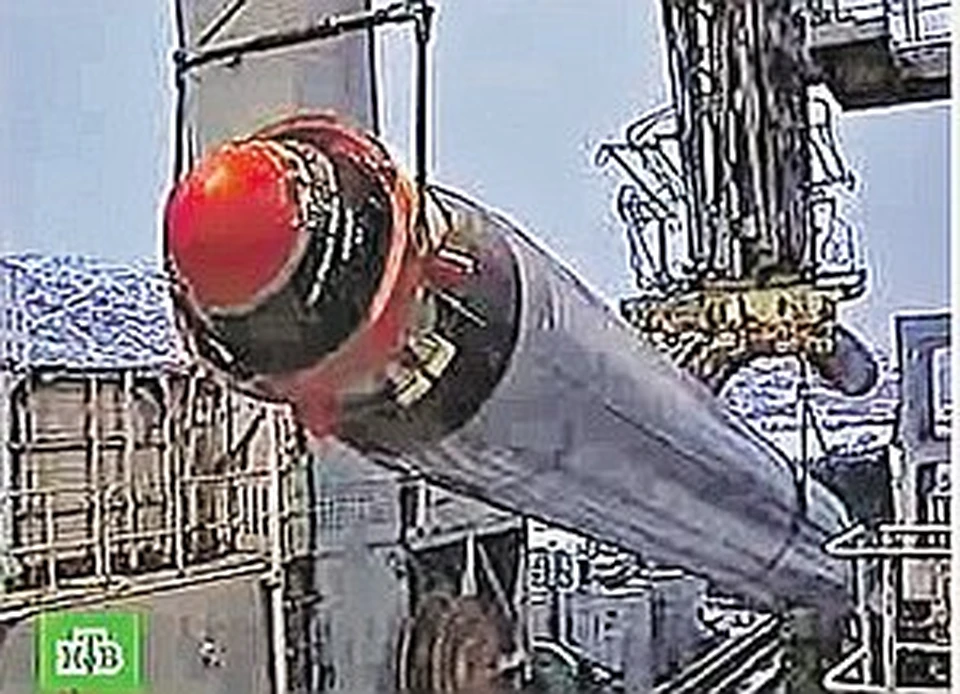Russia’s Shchuka and Dolphin ships are a force to be reckoned with for the U.S.

The Sineva missile. One of Russia’s naval trump cards. The missile can travel 8,300 kilometers.
In the last issue of our weekly, KP presented readers with a short history of nuclear submarines. Today, military expert Mikhail Polezhaev and KP correspondent, Colonel Viktor Baranets, compare the world’s two strongest naval powers.
KP: Mikhail Aleksandrovich, how many nuclear submarines are in the U.S. and Russia?
Polazhaev: We’re only counting submarines with ballistic missiles, correct? If so, Russia only has 12 . Their average age is 26 years old. We don’t have submarines that carry more than 16 missiles. The basis of our fleet is 6 Dolphin submarine carriers, which go by the NATO codename Delta-IV. The U.S. has 18 Ohio submarines. Four are undergoing repairs and modernization. Each submarine carries 24 missiles.
KP: So we’re losing to the U.S. in terms of the number of our submarines and their nuclear-missile potential?
Polazhaev: That’s obvious .
KP: The Americans say that in the event of a non-nuclear war, Russia’s submarines will be destroyed within 12-15 days. They say our submarines are loud and easy to capture and sink, even with regular torpedoes and bombs. Is that a bluff?
Polazhaev: Even the most invisible submarines makes noise. Everything makes noise: mechanisms, devices, screws and the water surrounding the submarine. Each submarine has its own specific sound. Whoever hears -- meaning discovers -- the enemy first is victorious. And the one hears first has less noise and more sensitive acoustics. This is why a key facet in submarine building is reducing noise. The U.S. nuclear submarine program is known for maintaining superior detection at long distances and mastering noise reduction. The
Ears for submarines
KP: Based on your comments, it seems that we’re losing to the Americans in terms of the number of our arms and their noise level and hydro-acoustic ability. You’re risking making our special agents very angry.
Polazhaev: Arguments about who is stronger and weaker are purely theoretical. Only real-time events are able to reveal the true state of affairs -- meaning war. Today, in peaceful conditions, submarines follow each other attentively, studying their enemy’s defining characteristics. For example, the American submarine called the Los Angeles and the Russian Shchuka (codenamed Victor-III in the U.S.) are nearly identical ships. However, the Americans think the Shchuka can detect the Los Angeles in deep waters at a distance of only 125 miles, while the Los Angeles can detect the Shchuka at a distance of almost 500 miles.
KP: In other words, the hydro-acoustics of the Los Angeles are three times more powerful?
Polazhaev: The Americans can think whatever they’d like. An interesting story comes to mind. Twenty years ago, we held a joint sailing and anti-submarine defense operation with the U.S. forces. As a result, it became clear that in the event that the Soviet Union called a fleet of modern nuclear submarines into action en masse, the U.S. navy wouldn’t be capable of organizing an effective defense. Even the Shchuka ships showed professional combat qualities.
KP: When you speak with our submarine sailors, they often tell tall tales about how they have almost scratched the underbellies of U.S. ships without the Americans even knowing.

Polazhaev: Would you like to hear a true story? In the winter of 1996, the Russian Embassy in London called the commanding officers of the British navy and requested they lend assistance to a sailor on board our Shchuka. He had come down with peritonitis, which can only be treated at a hospital. They agreed. The Shchuka surfaced and the Glasgow destroyer approached, picked up the sick individual and took him to shore. The British media was immediately confused. At the time the negotiations were being held in London to evacuate the sailor, NATO anti-submarine maneuvers were being conducted in the area where the Shchuka was located. But they only saw the submarine when it hit the surface to pass along the sick sailor.
It’s not all bad
KP: How would you rate the technical capabilities of the Russian and U.S. nuclear submarines that are currently in action?
Polazhaev: The Shchuka has a completely modern “offspring” -- called the Shchuka-B. Its level of noise is 4-4.5 times lower than its “mother’s.” We’ve even surpassed the Americans in this regard. The submarine’s Skat-3 hydro-acoustic system has increased its potential three times and is basically on level with the U.S. AN/BQQ-5.
In addition, the new Shchuka ships have an unparalleled submarine detection system that traces ships based on their wakes hours after their creation. The Shchuka-Bs will compete with the Virginia submarines that aren’t detectable by hydro-acoustics when patrolling at speeds up to 6-8 knots. This is as far as submarine-hunters are concerned. Our missile carriers have also improved. U.S. submarines like the Los Angeles can detect our Dolphins at a distance no greater than 30 kilometers in no-wind conditions. When the wind is blowing, the distance decreases to 10 kilometers, or the Dolphins aren’t detected at all. These are the submarines that have been armed with the Sineva ballistic missiles since their modernization.
KP: How do the agreements on reducing nuclear arms affect the Russian and U.S. nuclear submarines?
Polazhaev: The U.S. navy’s nuclear arms fit the framework of the agreement almost ideally, without having to do any damage to their combat potential. But ours… In 1992, we had 2,792 nuclear warheads on 58 ships. In mid-1998, the number of warheads decreased to 1,854 and the number of submarines to 26. When the agreement was signed in 1993, it was supposed Russia would have 23-25 combat-ready submarine cruisers by 2003.
KP: But a nuclear fleet isn’t only submarines…
Polazhaev: The fleet’s core is the people on board, but how can we even mention preparation if our submarines made only three campaigns last year. Fewer than in 2006! Meanwhile, the Americans always have 7 submarines at sea.
Viktor Baranets is waiting for your feedback on our site
Читать русскую версию: Наши «Щуки» и «Дельфины» порвут любые сети США
